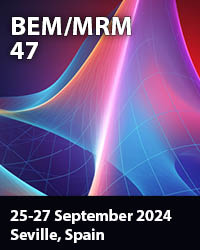The Conference programme of the 39th International Conference on Boundary Elements and Other Mesh Reduction Methods included a special seminar dedicated to the award of the George Green Medal, as well as the presentation of two keynote addresses and several special papers.
The George Green Medal was established by the University of Mississippi at Oxford, Mississippi, USA and the Wessex Institute and is now supported by Elsevier. It is in honour of the man who single-handedly set up the basis for the modern Boundary Element Method, amongst other achievements.
George Green (1793-1841) was a self-taught genius who mysteriously delivered one of the most influential mathematics and physics works of all time. He educated himself in mathematics and self-published the work “An Essay on the Application of Mathematical Analysis to the Theories of Electricity and Magnetism”. In his very first article he derived the Green’s first, second and third identities, forged the concept of Green’s function, and solved the problem of electrical potential created by a single charge placed inside a spherical metal shell. The idea of Green’s function forever changed the landscape of science, as many physics and mathematics problems have been solved using this technique. As Green died early, and his work was discovered only posthumously, it remains a mystery today how Green could produce such a masterpiece without the guidance of a great teacher or school and, in fact, without a formal education. Only recently, due to the advent of powerful computers, has it been possible to take full advantage of Green’s pioneering developments.
The Medal is awarded to those scientists who have carried out original work with practical applications in the field of Boundary Elements and other Mesh Reduction Methods, continuing in this manner to further develop the pioneering ideas of George Green. They are also persons of the highest integrity who, by sharing their knowledge, have helped to establish research groups all around the world. The selection process is conducted by a panel of internationally recognised scientists. The Medal is given once a year and presented during the conference.
Prof Alex Cheng
 |
| Prof Cheng |
Carlos Brebbia introduced the recipient of the Medal in 2016 who was Professor Alex Cheng. Alex obtained his PhD from Cornell University and is currently Dean of Engineering at the University of Mississippi. His research interests cover boundary element methods, mesh collection method, porous mechanics, nanomechanics, graduate modelling and saltwater intrusion.
He has authored five books and edited four speciality books and many conference proceedings. He has published nearly 200 articles in learned Journals. Alex served as President of Engineering Mechanics Institute of the American Society of Civil Engineers and Vice President of the Academic Affairs of the American Institute of Hydrology. He is Editor-in Chief of the International Journal of Engineering Analysis with Boundary Elements and Associate Editor of the Journal of Transport in Porous Media.
He has been the recipient of the prestigious Maurice A Biot Medal and the Walter L Huber Civil Engineering Research Prize, both of ASCE. Alex twice received a Basic Research Award from the National Committee of Rock Mechanics, and the Eminent Scientist Award of the Wessex Institute. He is a Fellow and member of the Board of Directors of the same Institute.




